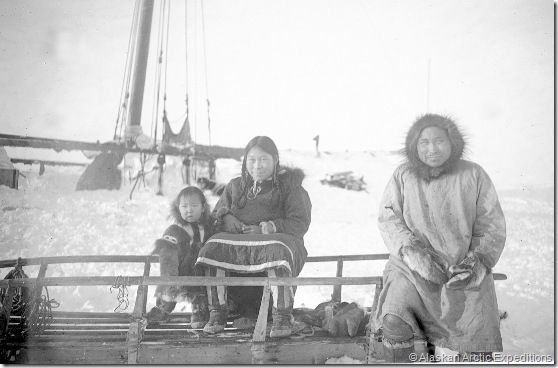The Forgotten Ones
There is a group of men and women that have been overlooked in Arctic exploration history. They were hardy folks that didn’t seek fame or fortune and weren’t backed with enormous budgets by the royal family or the government. They didn’t dine with the king or queen, or the president, nor were they glorified for discovering a new land. They weren’t honored with large memorable sites after their deaths like many of the popular explorers were, and in fact, some were just buried in a wooden box built of ship lumber and placed on the frozen tundra only to be visited occasionally by a wandering Arctic traveler a century later.
These people who assisted the popular explorers in their endeavors to explore a new land spent their lives fending off bears and ravaging wolves, battling famines, and traveling in the Arctic in their perpetual search for game. They were humble individuals, fiercely independent and self reliant residents of the Arctic. Although they may not have fared well monetarily from their struggle living in the Arctic, they were rewarded with freedom, and an indescribable strength and strong will which are two characteristics that money cannot buy. And I am certain these forgotten men and women had traveled more miles in the Arctic than many of the most popular explorers ever dreamed of. Many of these folks that the explorers relied on for assistance and guidance include local natives as well as men and women from around the world, whom for one reason or another, took residence in the Arctic.
Often, while traveling on the Arctic coast, I have found frozen in the sand many century-old artifacts, like dog sleds, ship lumber, bottles, house logs, and rusted wood burning stoves. These items are evidence of the people who lived along the coast. Further proof exists in the photographs captured by individuals traveling through the region. However, as I travel in the mountains I am surprised that the same evidence of people isn’t found there. And there aren’t many historical records of the popular explorers venturing into the mountains either, and I don’t blame them. Traveling in the mountains is tedious, slow and extremely exhausting work. You can struggle all day and cover only five miles. Yet, on a few occasions I have found old tent sites and other artifacts high on windblown ridges in some of the most inhospitable mountainous regions. It’s my guess that these Arctic residents spent their long days in spring awaiting the migrating caribou on these ridges. I find it astounding that these folks traveled and made a living in this harsh mountain country as well as along the Arctic coast. To me, they were certainly the true explorers.
Photos and captions from the US Geological Survey Photographic Library.
Dan Sweeney and Shagavaichiak. Anglo-American Polar Expedition. Canning district, Northern Alaska region, Alaska. C. 1910.
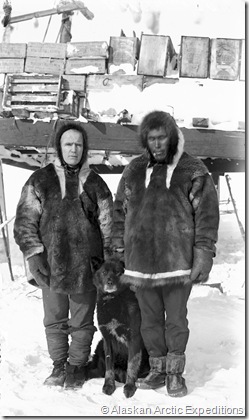
Native Eskimo. Okalisuk and puyuk (dog). Anglo-American Polar Expedition.district, Canning Northern Alaska region, Alaska. C. 1910.
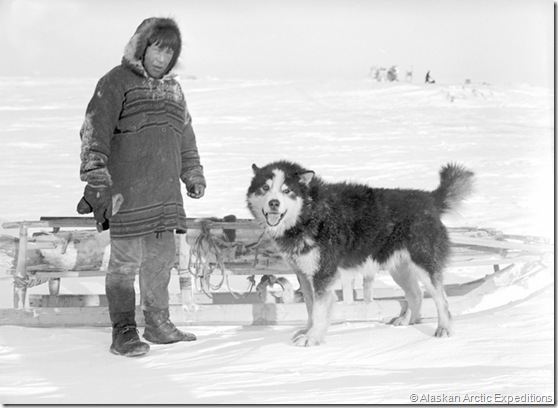
Ernest de Koven Leffingwell, in cabin, Flaxman Island. Anglo-American Polar Expedition. Canning district, Northern Alaska region, Alaska. C. 1910.

Native Eskimos, Sheep hunters’ camp on the Canning River. Anglo-American Polar Expedition. Canning district, Northern Alaska region, Alaska. C. 1910.
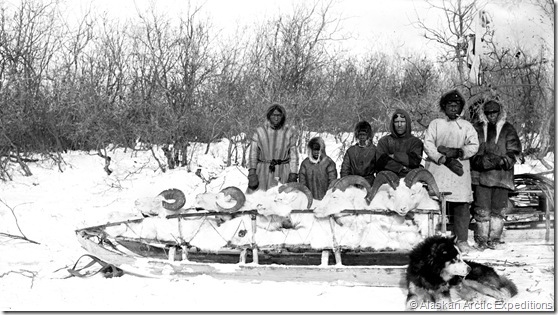
Triangulation signal erected over Astronomical Observatory Pier at Flaxman Island. Used from KUG Station 20 miles inland. It looks eccentric but was lined up O.K. for KUG. Anglo-American Polar Expedition. Canning district, Northern Alaska region, Alaska. C. 1910.
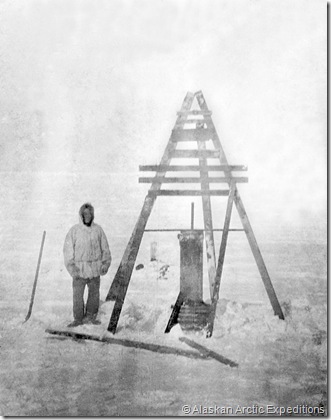
Pete Bernard feeding his dogs at Collinson Point. Anglo-American Polar Expedition. Canning district, Northern Alaska region, Alaska. C. 1910.
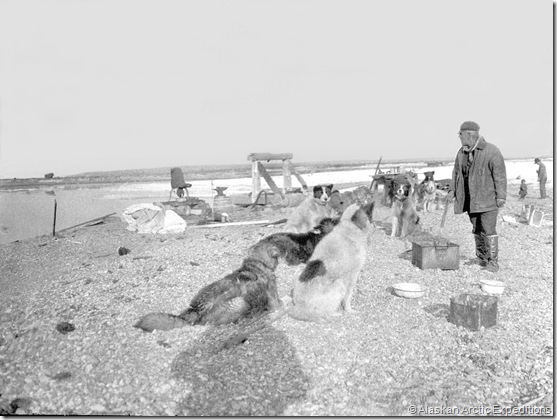
Sledding up Canning River in April. Anglo-American Polar Expedition. Canning district, Northern Alaska region, Alaska. C. 1910.
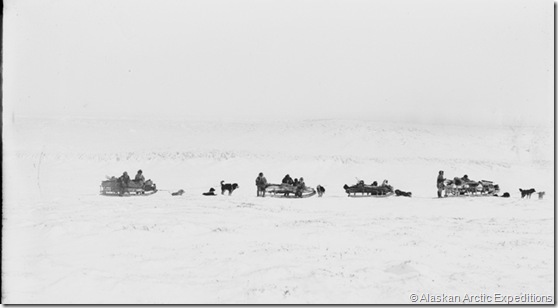
Ernest de Koven Leffingwell (left), Captain Ejnar Mikkelsen (center) Dr. G. P. Howe (right). Anglo-American Polar Expedition. Canning district, Northern Alaska region, Alaska. C. 1906.

Eskimo [native] summer camp on Arey Island. Anglo-American Polar Expedition. Canning district, Northern Alaska region, Alaska. C. 1908.

Natives at Flaxman Island. Anglo-American Polar Expedition. Canning district, Northern Alaska region, Alaska. C. 1910.
